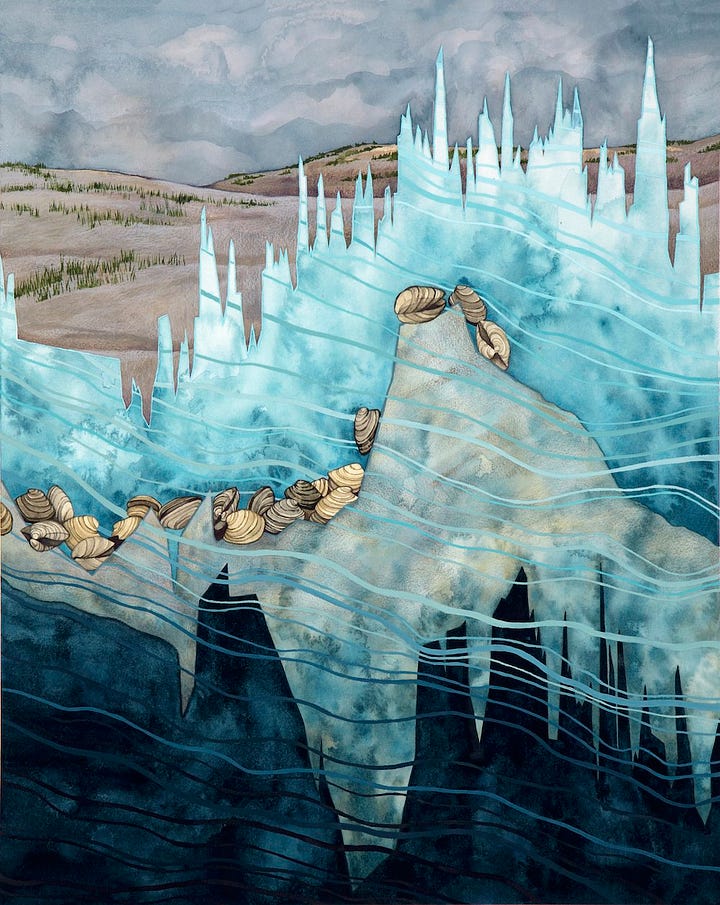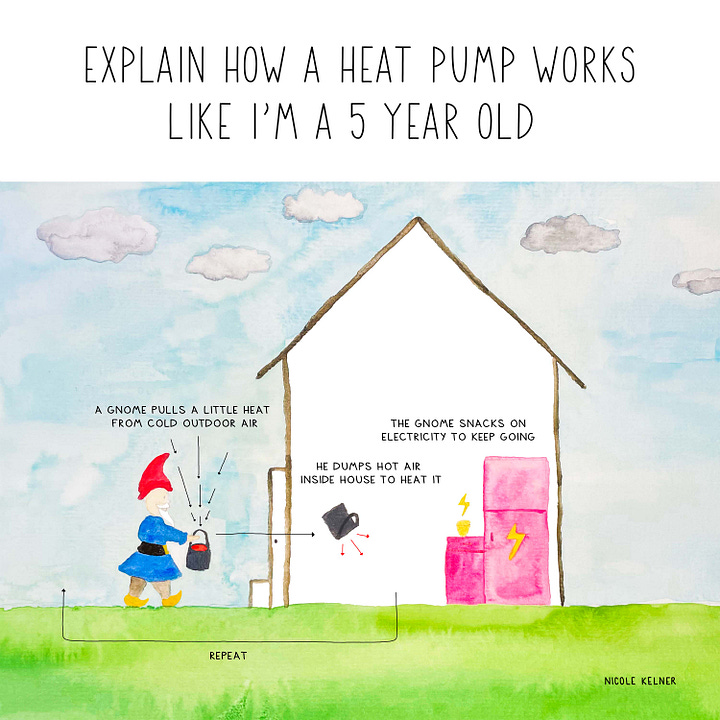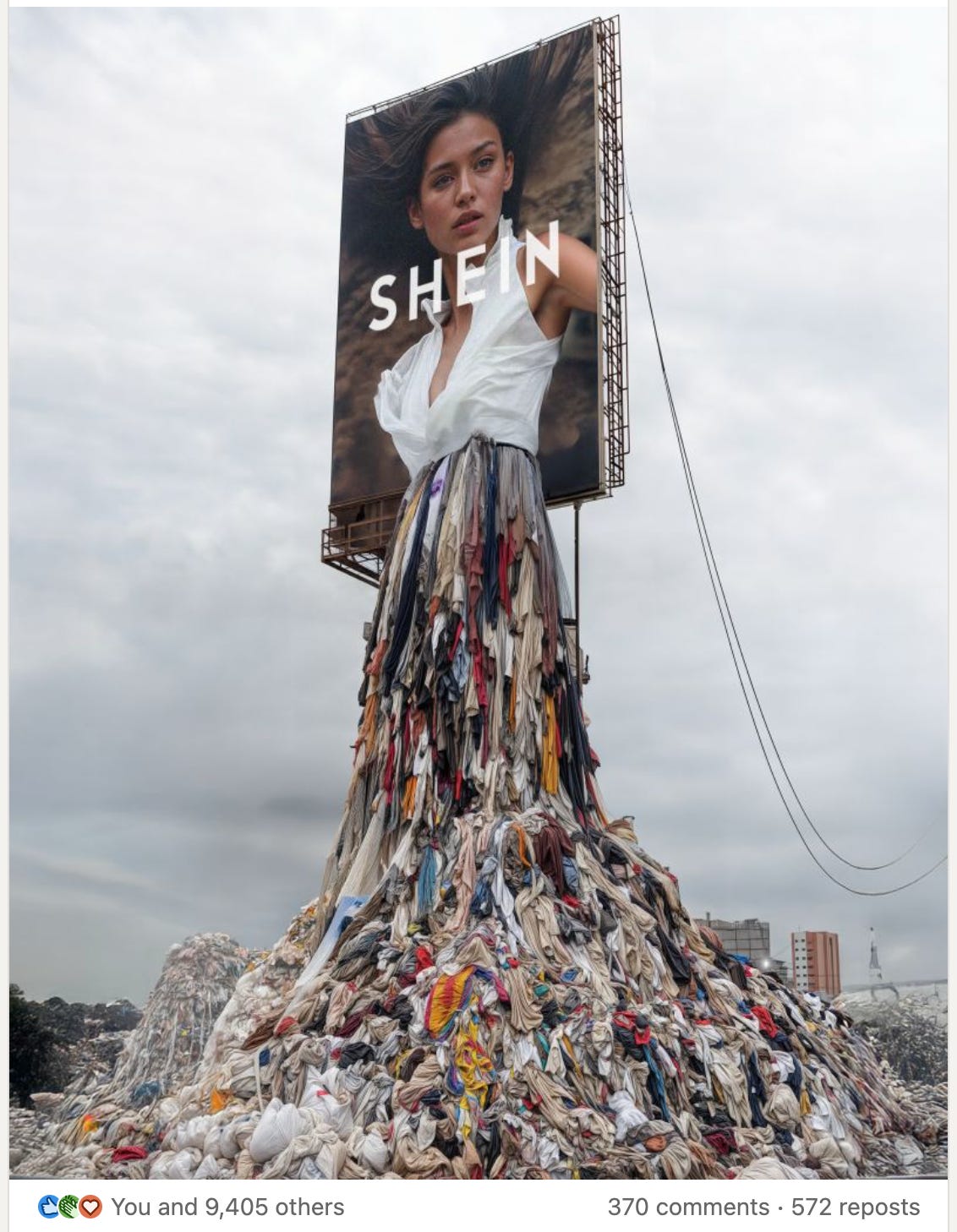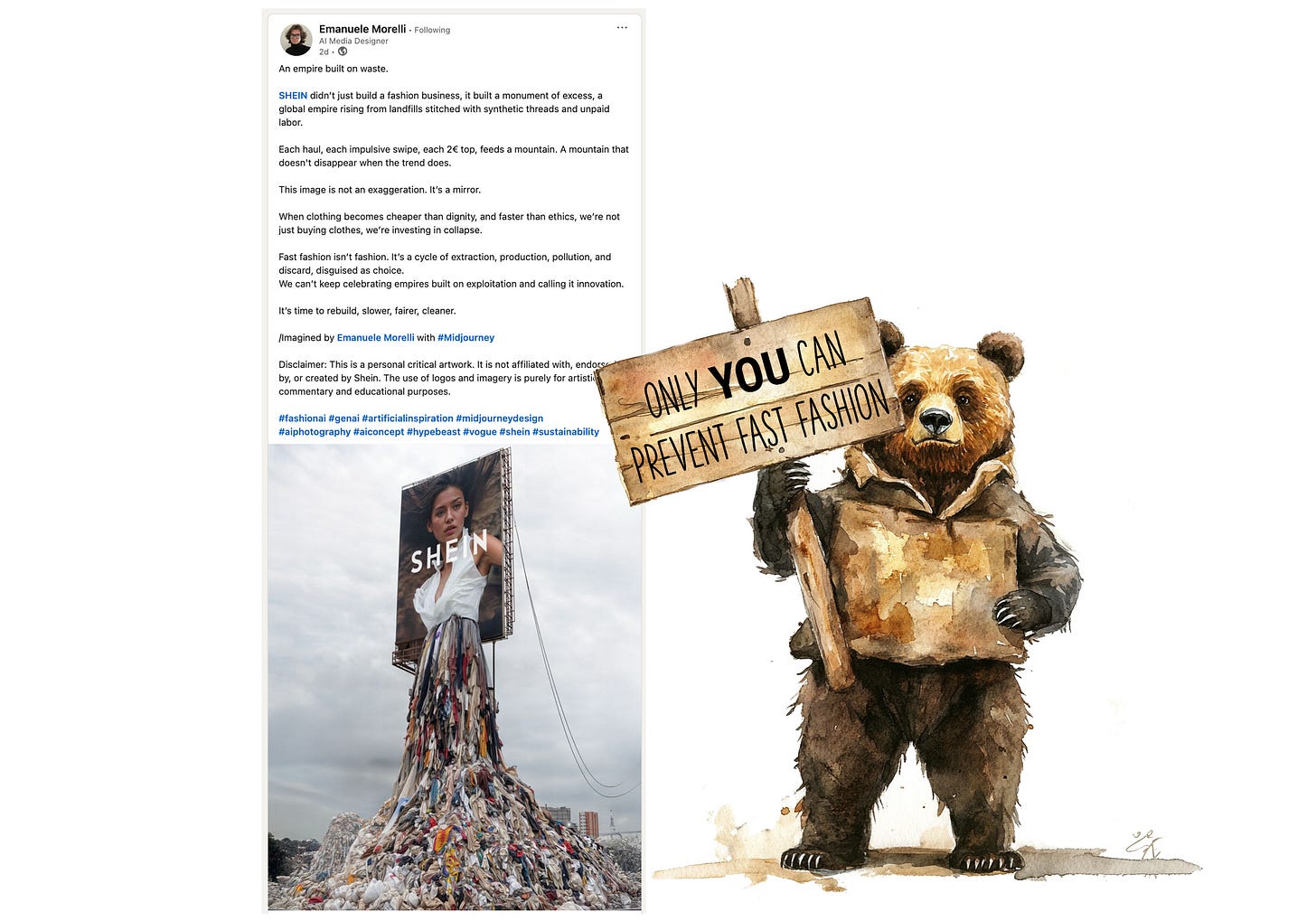Art in Climate: How the Right Image Can Move Mountains
A single image made me feel more about textile waste than a dozen reports ever have.
I keep thinking about this one image.
It showed up in my LinkedIn feed a couple days ago—shared by Circularity teacher Vojtech Vosecky and created by artist Emanuele Morelli using his creative mind and AI. I don’t know Emanuele personally, but I want to thank him.
His post is going viral.
On first glance, it looks like an ad.
A glamorized billboard featuring a beautiful model, styled and posed in all the ways we’ve come to expect from fashion campaigns.
It’s familiar. Glossy. Visually pleasing. I didn’t question it.
But then you look for another millisecond, and you realize: she’s not in front of a white backdrop or a sleek runway. She’s rising above an actual landfill. A mountain of textile waste, mostly clothing.
It’s jarring, but not grotesque.
It’s stunningly well-composed.
And that contrast, the fantasy and the fallout, hit me (and thousands of other readers) with more clarity than any policy paper or angry climate thread ever has.
I sat with it for a while.
As a photographer, I wondered:
Why is this image so effective?
There was something about it that didn’t just inform me.
It made me feel complicit. Not in a shame-inducing way, but in a real, disarming way.
I saw myself in the billboard. I remembered moments I’d been tempted to click on a Shein ad, or scroll through Temu, or wonder how on earth these clothes could be so cheap.
I’ve had that moment: “Wait, how is this dress $6?” And then the whisper in my brain that says, “Maybe just try it once.” Even knowing what I know, those temptations still live in me.
And so when I saw this image—this manufactured moment of beauty superimposed on the truth, I didn’t just recognize the message.
I recognized my own pattern in the top-to-bottom equation.
It will take me about 500 words to explain what the image conveys in 2 seconds.
And that’s the brilliance of it.
We need more of this.
More art that short-circuits our defenses and lets the truth land in a different way.
Why does this image work?
I’ve been trying to dissect it—not just emotionally, but strategically—because I want to learn from it.
It starts with visual trust. The billboard looks like something we’re conditioned to admire. That recognition lowers our guard.
Then it introduces discomfort. The reveal happens slowly but clearly. Suddenly the model isn’t the message. The setting is. And it’s real.
It collapses fantasy into consequence. The glamour is a lie, but it’s a familiar one. And now we see where that lie leads. Not metaphorically, but physically. Tangibly.
It offers no escape. You can’t unsee it. And it doesn’t give you an easy out. You’re left with the dissonance, and that’s the point.
I was further intrigued by the comments under the post accusing the artist of hypocrisy for using AI to create an image about sustainability. Emanuele responded beautifully, pointing out that traditional photo shoots for fashion ads often involve flying in crews, building wasteful sets, and using huge amounts of equipment, props, and energy.
AI, for all its flaws, has a fraction of that footprint. (Mic drop)
And more importantly, it started a conversation. Ten thousand people reacted….and counting. Thousands shared. We are talking about it now.
That feels like a win.
And it’s not the only artistic approach making waves.
Jill Pelto paints with real scientific data—literally embedding graphs into her landscapes so that beauty and urgency live in the same space. Nicole Kelner illustrates climate solutions with watercolor diagrams and teaches others how to do the same. Her Substack newsletter is full of tools and encouragement for climate creatives.


What I love about these artists is that they aren’t just reporting the data. They’re feeling it. Translating it. Making it legible to people who may never read a policy brief or attend a city council meeting.
That matters.
Because the scary images of the floods, the wildfires, and the satellite views of hurricanes, they lose their edge by pushing people away. Not because they aren’t real, but because they’re too real, too often.
We go numb. Or we feel hopeless. Or we scroll on.
But art like this? It invites us to pause. And maybe even to change.
Earlier this week, I saw someone on Substack Notes express genuine concern that Shein prices were going up due to tariffs. She wondered aloud if she could create a Shein resale marketplace to get around it. Ironically, she was proposing a circular model for one of the most un-circular brands on Earth.
I didn’t scoff. I encouraged her.
“Try it,” I said. “See what you can do. I hope you find what you need secondhand and never have to buy new from them again.”
We’re all somewhere on this path. We’re all still learning.
No one’s perfect here.
But moments like that image from Emanuelle.
His idea created the artwork and is making waves.
So here’s what I’m left wondering:
What if we had more art like this?
What if every environmental campaign started with a feeling rather than a fact?
What if we funded artists the way we fund consultants?
What if we stopped trying to educate everyone into action, and instead, moved them to act?
If you’re an artist reading this, consider this your invitation.
We need you.
We need your voice, your vision, your weird experiments and your stunning juxtapositions. Climate needs more than charts. It needs storytellers and provocateurs and quiet sketchers with something to say.
And if you’ve seen climate art that changed you, please share it in the comments.
I want to feel it too.
Let’s make this a space where art and climate collide.
Where curiosity, not shame, drives us forward.
And where beauty doesn’t hide the truth, but helps us face it.




